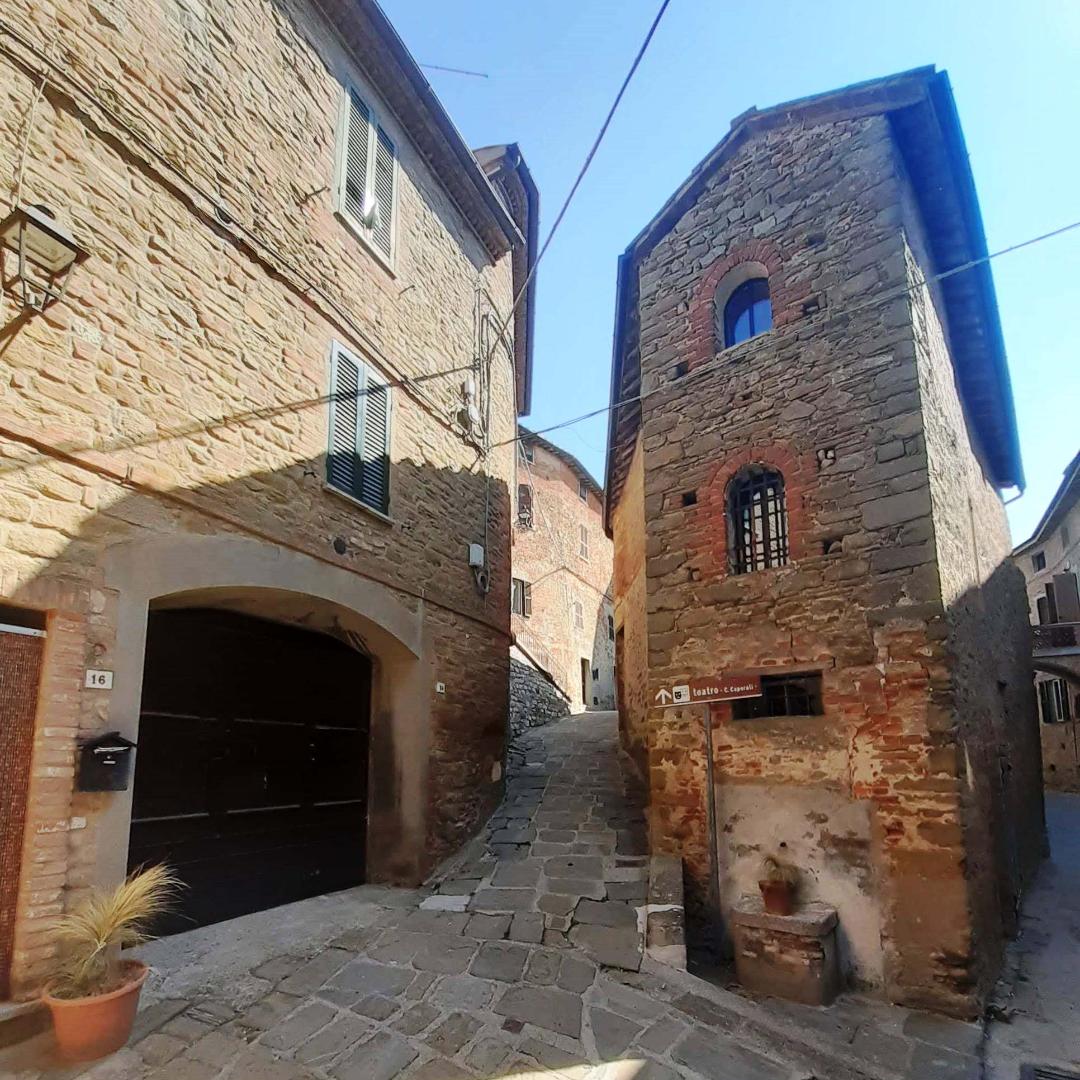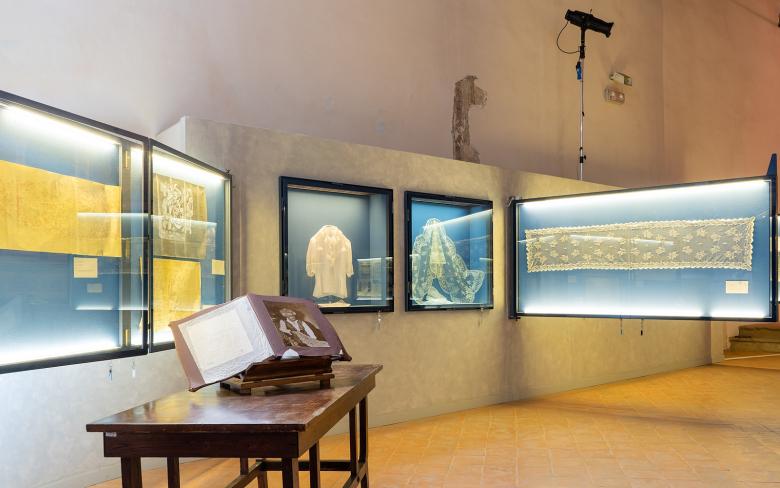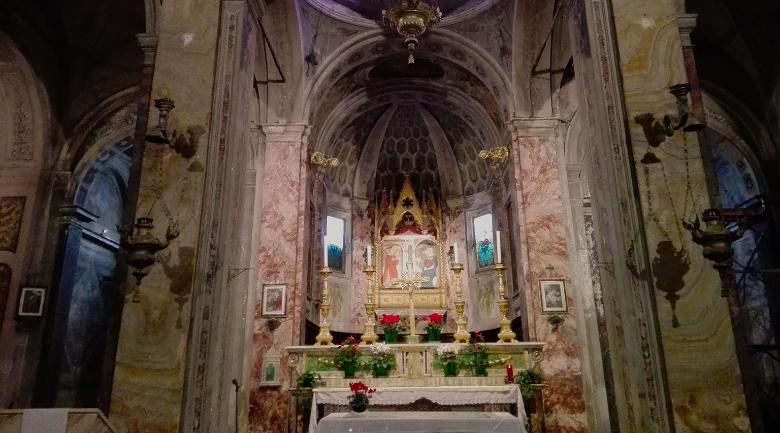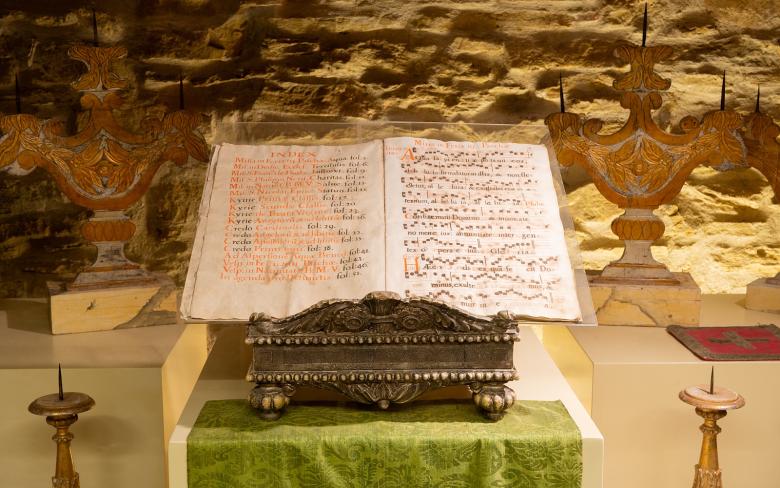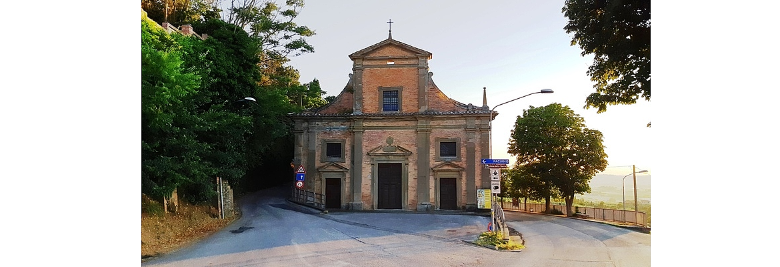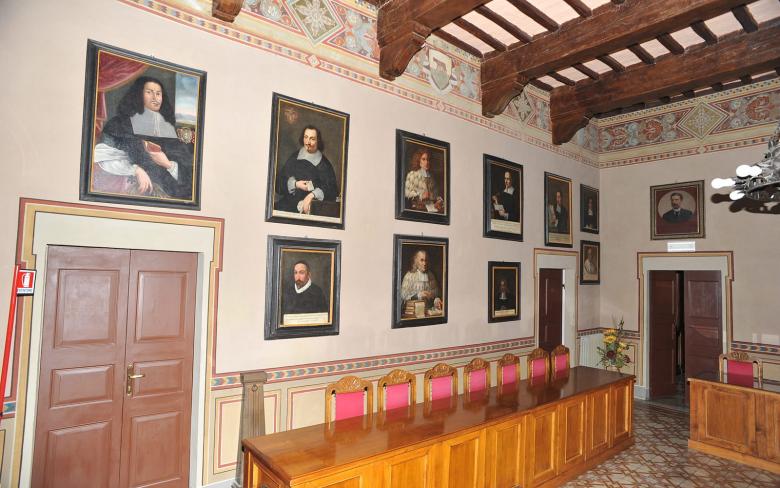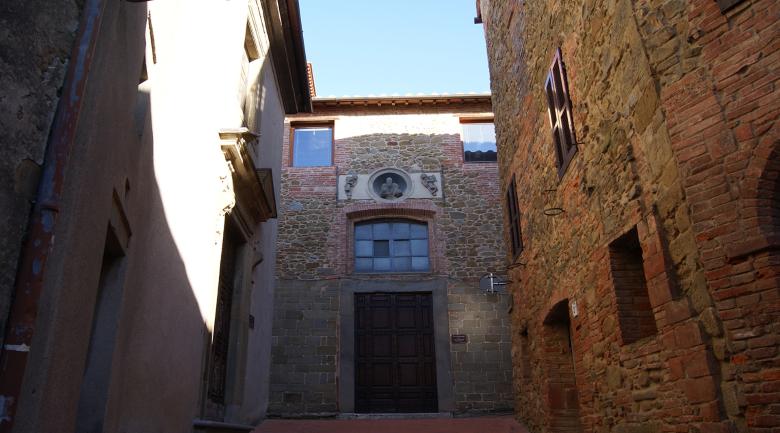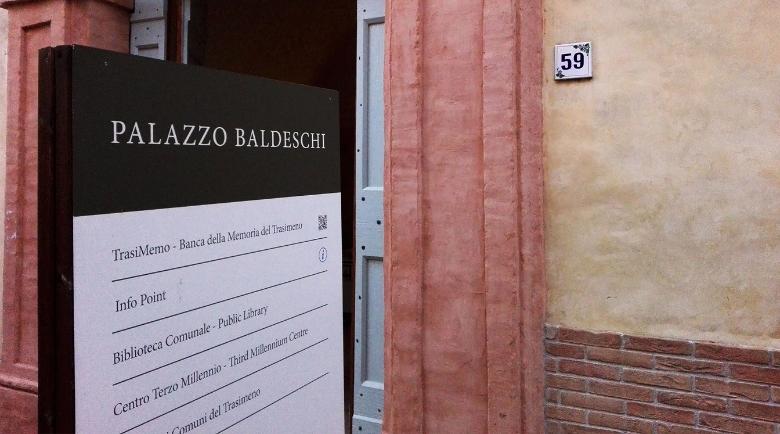The centre of the village opens from the Porta Perugina, a passage through the first of three squares located on three different levels. The first, Piazza Umberto I, with the travertine fountain built in the 1400s; Piazza San Michele Arcangelo where the baroque Collegiate Church of San Michele Arcangelo, a symbol of religious power, is located, and finally at the highest point, in Piazza Masolino, where the Palazzo del Podestà is located, built between the 12th and 14th centuries by the Comacini Masters. Its tall bell tower is a landmark visible from the valley below.
Don’t miss seeing the church of San Michele Arcangelo, with its beautiful Annunciation behind the main altar. The work was rediscovered in 1684, during excavations to assess the building’s stability. Since then, Panicale became the destination for an increasing flow of visitors, drawn by the novelty of the discovery. The image was detached and placed in a small chapel. The curiosity was soon transformed into devotion: an old tradition says that “some invalids, especially on work days, scraped bits from the lower parts of the picture, put them in their mouths, and were restored to health”.
The historic centre is also home to the Cesare Caporali public theatre, which hosts a full programme of events throughout the year. This historic theatre, one of the most evocative in Umbria, features a stage curtain depicting the mercenary captain Boldrino Panieri of Panicale, by the Perugian painter Mariano Piervittori.
Be sure to visit the Tulle Museo, in the former church of Sant'Agostino, in piazza Regina Margherita off of piazza Fiorentina. The museum is dedicated to Anita Belleschi Grifoni, a woman of Panicale who at the beginning of the 20th century sought to repopularise a type of embroidery called "Ars Panicalensis". This is needlework on cotton or silk tulle, which was already practiced starting in the first decades of the 19th century, thanks to a loom to mechanically produce tulle, which was improved by the Englishmen Heathcoat and Lurdley in 1809. Tulle, a very lightweight and gauzy fabric, is also resistant, with a weave made up of hexagonal openings.
For a deeper look into the history of local families, we suggest visiting the Pinacoteca Mariottini, housed in City Hall in via Pietro Vannucci, which displays 31 commemorative portraits of illustrious citizens.
Outside of town, along the road that descends toward the lake, is the Baroque church of the Madonna della Sbarra. It takes its name from a historic toll barrier (or sbarra) located there. The church was built to house a sacred image of the Virgin Mary.
Other attractive sites within a few kilometres of Panicale are the Sanctuary of the Madonna of Mongiovino (16th c.), which has always drawn Marian devotees, and the Sanctuary of the Grondici, from which there is a breath-taking panorama over the surrounding valleys.
























